Ladybugs are colorful little insects that are admired by many.
Ladybugs are known not just for their vibrant red and black-spotted wings, but also for their valuable contribution to garden ecosystems.
There are plenty of things that attract ladybugs to certain areas. Additionally, you can also create a welcoming environment for them in your garden!
Understanding what attracts ladybugs can improve your gardening experience and help to increase the population of these beneficial insects.
- Related article: Insect Ladybug Facts
Are you curious why attracting and keeping ladybugs in your garden is a good thing? We have them explained to you!
Why Attract Ladybugs to a Garden?
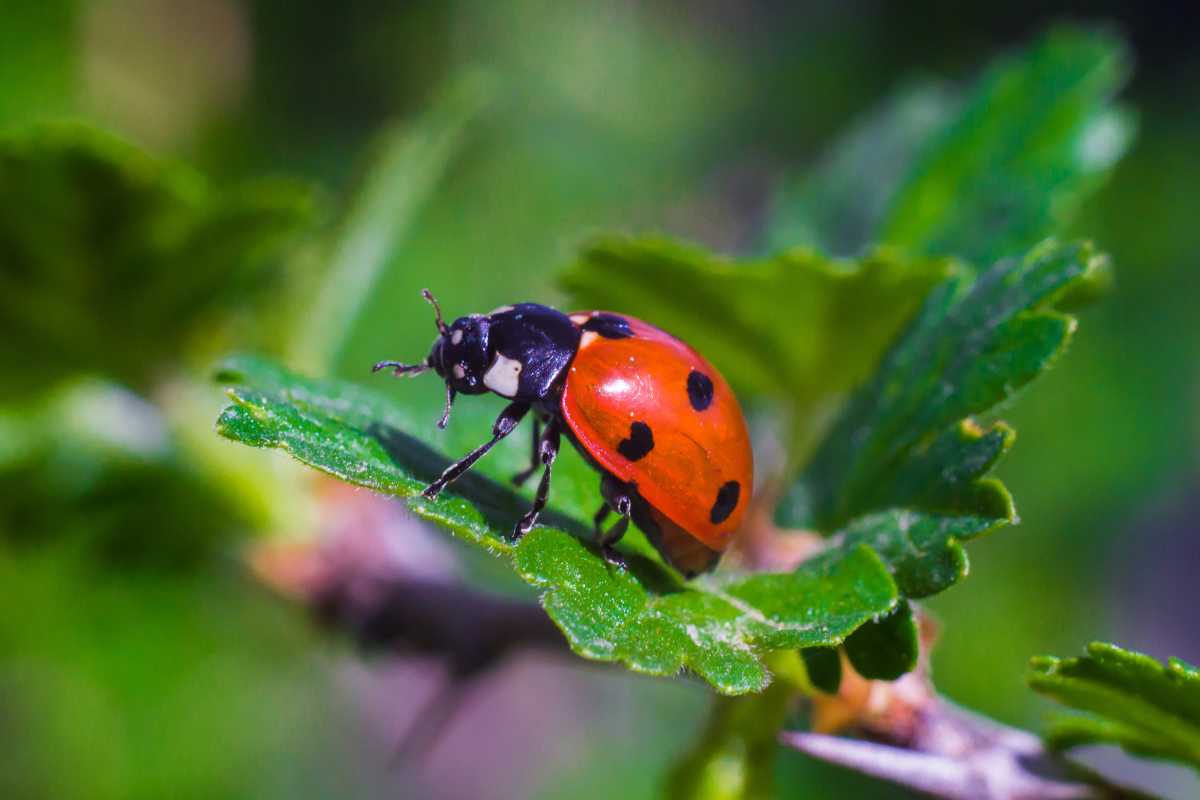
You might think: “Really? Attracting insects to a garden?”, and that’s understandable as it seems strange, but yes, there are insects that you want to be thriving in your garden—one of them would be ladybugs!
Ladybugs are one of the most beneficial insects—they act as a natural form of pest control so you won’t need to use chemical pesticides.
Ladybugs are in fact, fierce predators. As adults, they can consume lots of aphids, up to 50 or even 70 aphids in a single day!
They prey on most soft-bodied yet destructive pests, such as mites and scale, with aphids being their favorite victims.
Ladybugs begin eating as soon as they are born as wingless, ladybug larvae. The eggs are laid directly next to aphid colonies so that their primary source of food is readily available.
At this larval stage, baby ladybugs are much more voracious than adult ladybugs, consuming ten times more aphids.
Ladybugs will do anything to survive, so if food is scarce, they resort to eating eggs that haven’t yet hatched.
Sometimes, female ladybugs lay unfertile eggs expressly to provide a secondary source of food for their young.
Their voracious appetite is the main reason why you want to attract ladybugs to your garden as they will consume all of your most destructive garden pests.
There are many other beneficial insects, but ladybugs have the added benefit of being easy to see, so you can make sure they are thriving or act accordingly to improve their habitat.
How to Attract Ladybugs to the Garden
Ladybugs need more than just your willingness to let them stay for them to actually stay. They would need food, water, and more to survive.
Now that you are convinced that it’s a good idea to attract ladybugs, let’s see how to go about it.
1. Attract Ladybugs With Food
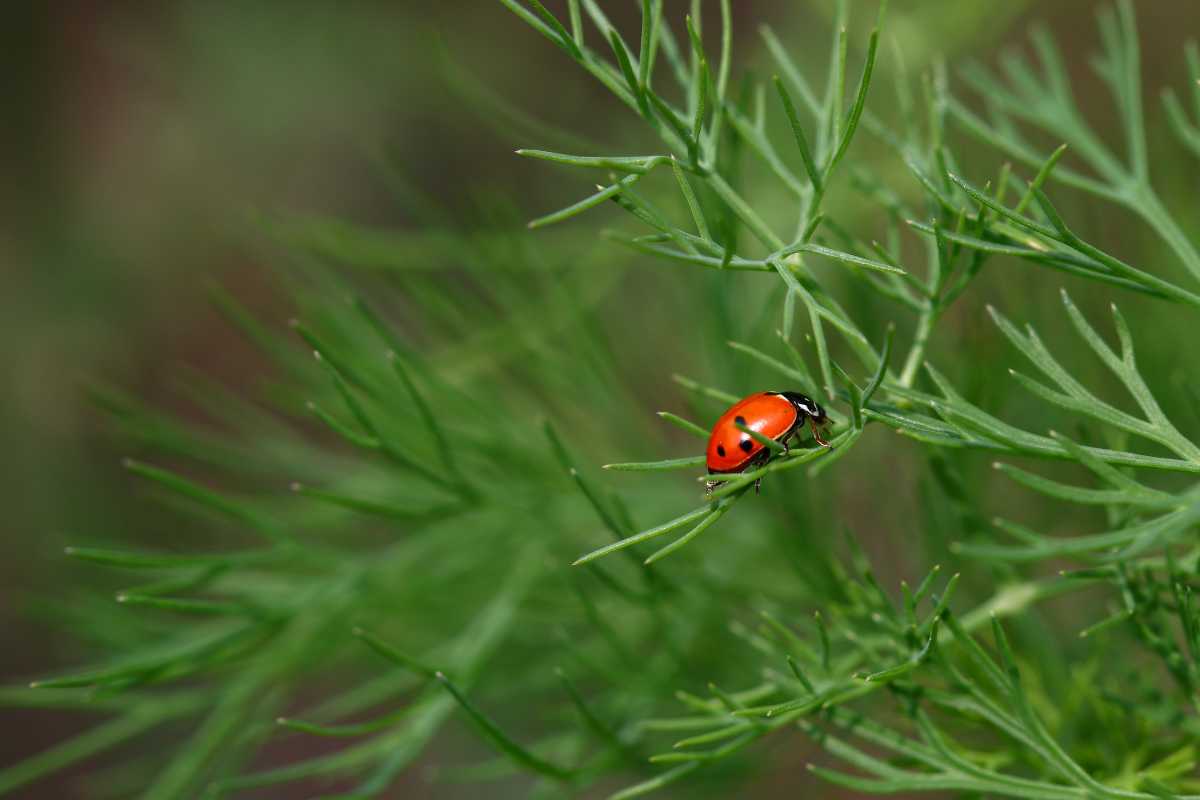
Essentially, like any other animal, what works best is to lure them in with food supplies. If your garden is already riddled with aphids, ladybugs will most likely arrive by themselves, sooner or later.
But in order to survive, these beetles also need pollen.
The best is to plant many varieties of flowers, which will also attract beneficial pollinators and will make your garden more diverse and beautiful.
The favorite flowers of ladybugs are usually flat flowers, and white or yellow in color.
Here are the ladybugs’ topmost favorite flower foods:
- Angelica – Angelica has tall stems reaching up to 2 meters in height, with large and hollow leaves, small white flowers, and dark green seeds.
- Calendula – Calendula is an annual flower that has bright yellow or orange petals that form a star-shaped flower head and deep green leaves.
- Caraway – Caraway is an annual herb that has thin stems with small white flowers and dark green leaves.
- Chives – Chives are a species of onion related to garlic and leeks, and they are perennials with slender, hollow leaves and small purple flowers.
- Cilantro – Cilantro is an annual herb that has thin stems, small white flowers, and dark green leaves.
- Cosmos – Cosmos is an annual flower that has feathery leaves and daisy-like flowers, which come in a variety of colors, including pink, white, yellow, and purple.
- Dill – Dill is an annual herb that has thin stems with small yellow flowers and feathery leaves.
- Fennel – Fennel is an herbaceous perennial that has a tall stem with small yellow flowers, plus feathery leaves.
- Feverfew – Feverfew is a perennial herb that has thin stems, with white or yellow daisy-like flowers and long, finely divided leaves.
- Marigold – Marigold is an annual flower that has thin stems with brightly colored flowers in a range of shades, including orange, yellow, red, and white.
- Statice – Statice is an annual flower that has thin stems with small white or purple flowers and long, narrow leaves.
- Sweet Alyssum – Sweet Alyssum is an annual flower that has thin stems with small white or pink flowers and short, narrow leaves.
- Yarrow – Yarrow is an herbaceous perennial that has thin stems with small white or yellow flowers and finely divided leaves.
Planting a few species that attract aphids can be really helpful too. This can seem counterintuitive, but consider that these will work as decoy plants, keeping aphids distracted from your main crops.
Here’s a list of garden plants that are all guaranteed to attract aphids: Early Cabbage, Marigold, Nasturtium, and Radish, with Nasturtium being the most effective.
If aphids are plentiful, ladybugs will be as well.
2. Fresh Water Source
Ladybugs will also need access to water, so if one is not already available in your garden, it’s a good idea to place shallow dishes of water in different places.
Make sure the water is not too deep, or the ladybugs will drown.
3. Build Ladybug Shelters
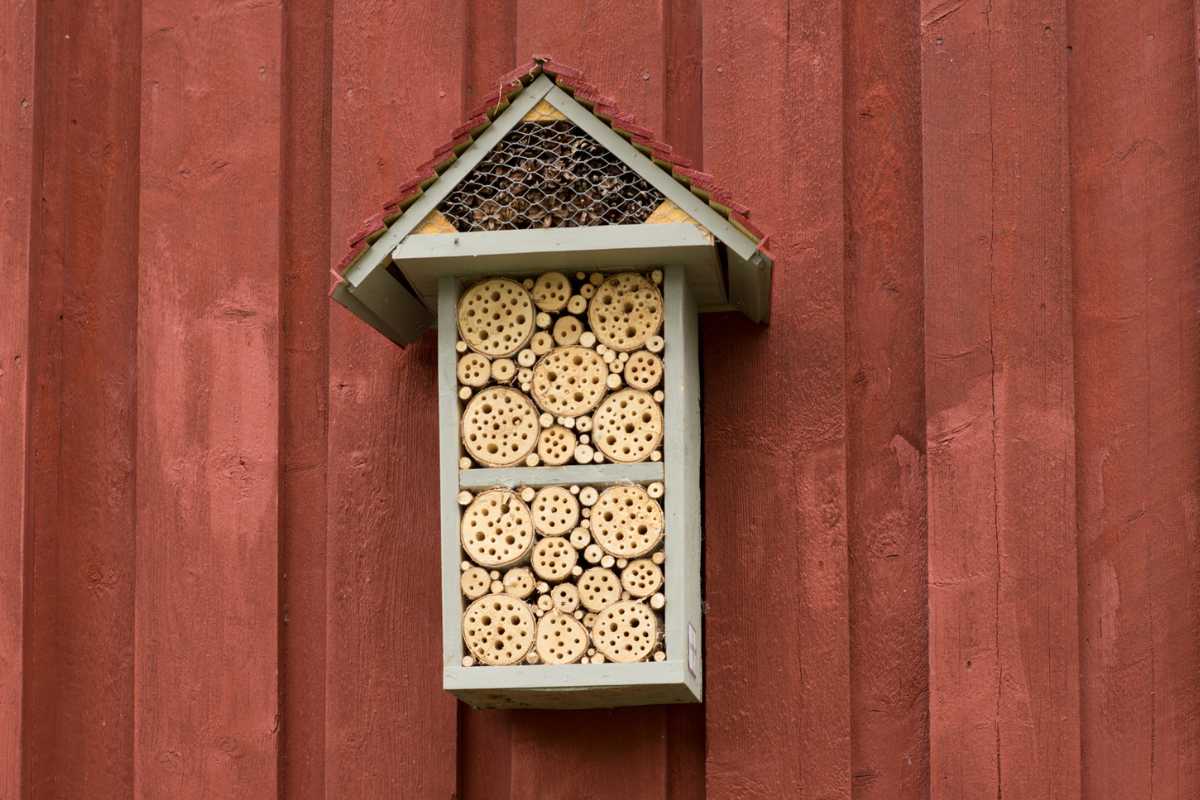
Some people advise also providing ladybug houses to be used as shelters.
You can easily build one yourself with a wooden box with holes. Fill the holes with something sugary, which are excellent ladybug attractant, and you will lure ladybugs in.
Alternatively, shelter can also consist of piles of leaves, mulch, or low plants such as thyme and oregano, which ladybugs can use as a hideout from predators.
4. Never Use Pesticides
Finally, ladybugs are a gardener’s best friend, so if you want ladybugs to thrive, you must never use pesticides.
These chemicals are designed to kill insects, so using them in an area that you are trying to lure ladybugs to would be counterproductive.
Pesticides will likely kill them and any other beneficial insects in your garden, meaning that pests could take over your plants without the help of the ladybugs.
Not just that, but these chemicals can be really toxic to humans and other animals, so it is best to avoid them as much as possible.
Tips to Keep Ladybugs in the Garden
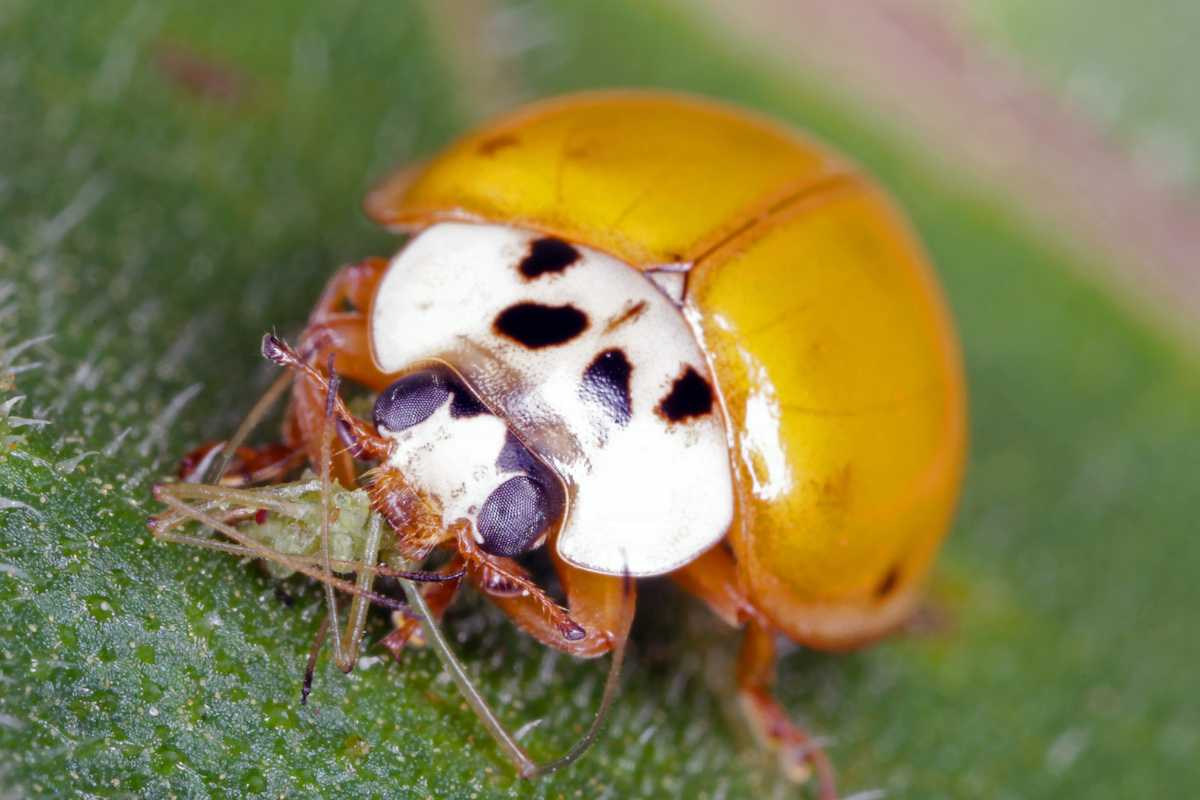
Ladybugs are pretty easy to lure in as long as you provide their basic necessities—food, water, and shelter—which creates an environment that will keep them happy and satisfied, ensuring that they will want to hang around your garden in the long run.
The difficult part is ensuring that during the warm season, they always have plentiful ladybug food.
Pollen by itself won’t sustain them for long, so if there are no prey in your garden, they will fly away.
It’s their nature to be migratory, moving from place to place in search of aphids and other prey. That’s why having plants that aphids love is a good idea.
The key is to find the right balance, where you have enough aphids to keep ladybugs interested, but not so many that they will cause too much damage to your plants.
In order to achieve this, it’s important not to use pesticides, since they will wipe out most insects, dangerous or not.
Also consider that these pesticides can be harmful to you, your vegetables, and the environment, plus most of these chemicals are also dangerous to pollinators, which are essential for the well-being of most plants.
If, and only if, the situation is dire and uncontrollable, you may opt for safer methods that are less likely to affect ladybugs, such as horticultural oils and insecticidal soap.
Here are some tips you can follow if you purchased ladybugs and would like to know how you can keep them from flying away:
The first one would be to release them in the evening and then place them directly beneath their food source, which is the aphid-infested plants.
Remember that it’s useless to buy ladybugs if there are no pests in your garden since they are ravenous when released and will go in search of food somewhere else.
They will also be thirsty, so it’s a good idea to water the garden beforehand.
Finally, make sure they have a safe shelter available, which can be as easy as leaving leaves or mulch laying around, or as creative as building your own ladybug house.
Can You Buy Ladybugs?
Most experts advise not to purchase ladybugs, but if you have a big pest infestation and no ladybugs are around, you can purchase and release them in your garden.
Nowadays, ladybugs are easily available, both online and in physical stores.
The most common species available is the Convergent Lady Beetle (Hippodamia convergens).
While buying ladybugs can pose some problems, it’s still a better solution than using insecticides.
Problems With Purchasing Ladybugs
There are a number of potential problems if you decide to purchase ladybugs:
Ladybugs are often captured in the wild, so there’s no way to ensure they don’t carry diseases or parasites that can infect the local population and your garden.
Most of them are collected in California, where plenty of ladybugs gather in the fall to hibernate. The extensive removal of so many of these insects from a single location could cause environmental imbalances that we are not yet aware of.
Ladybugs need to be refrigerated if they are stored for more than a few hours, so avoid retailers that keep them at room temperature.
Stay away from shops that don’t declare which species they are selling, or you could unknowingly purchase the Asian lady beetle (Harmonia axyridis).
This beetle does control pests, but it can also swarm your home in great numbers during the winter, hurting the local ladybug population.
If you still want to buy ladybugs, be sure to choose a reputable supplier.
Ladybugs Releasing Tips
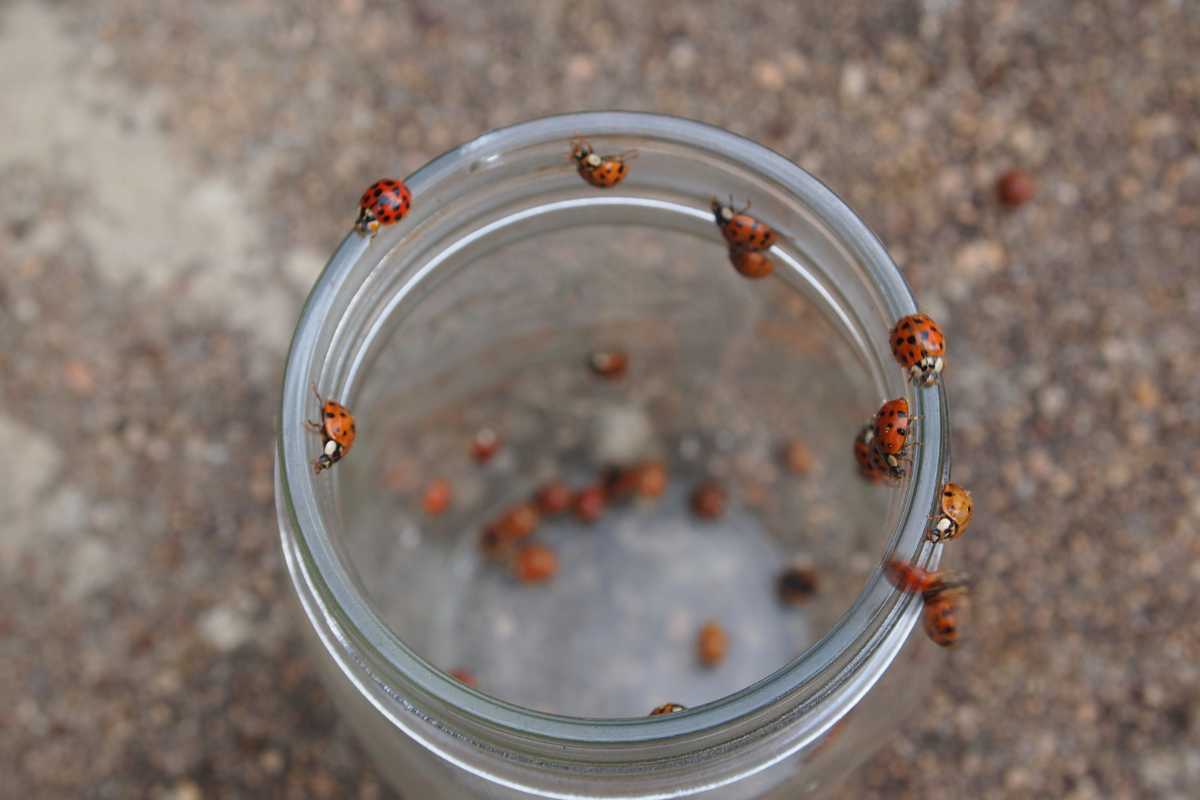
The perfect time to release ladybugs would be in the evening next to sources of food and water. That will help encourage them to stay in your garden and protect it.
It’s also a good idea to free them in small amounts at a time since they are often sold in batches of 1000 or more individuals. This many ladybugs will wipe out all pests in a matter of days and then fly away in search of more if you release them all at once.
You can instead release a few individuals, maybe twice or three times a week, keeping the rest in the fridge. They can survive at low temperatures for up to 2 to 3 weeks.
After you take them out of the fridge, give them a few hours to wake up properly before you release them.
Final Thoughts on Attracting Ladybugs to Your Garden
Amazing, right? It is undeniable that ladybugs are definitely fascinating insects that are not just colorful, but also highly beneficial to every garden because they help improve its health.
Just by following the simple steps above, you can enjoy the beauty of these cute, little insects in your garden, while also reaping the benefits of their natural pest-control abilities!
Take a look at these articles to learn more about ladybugs:
Sources:


